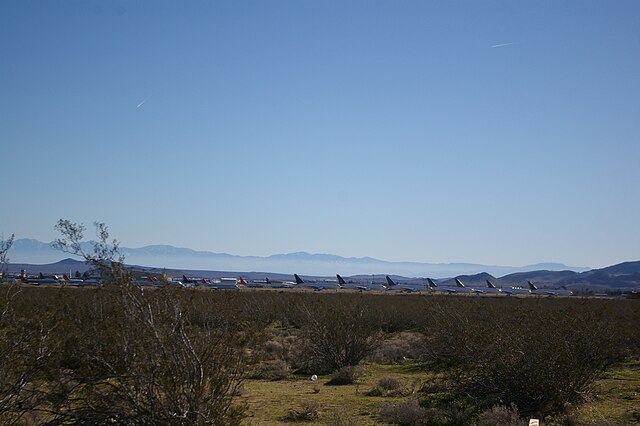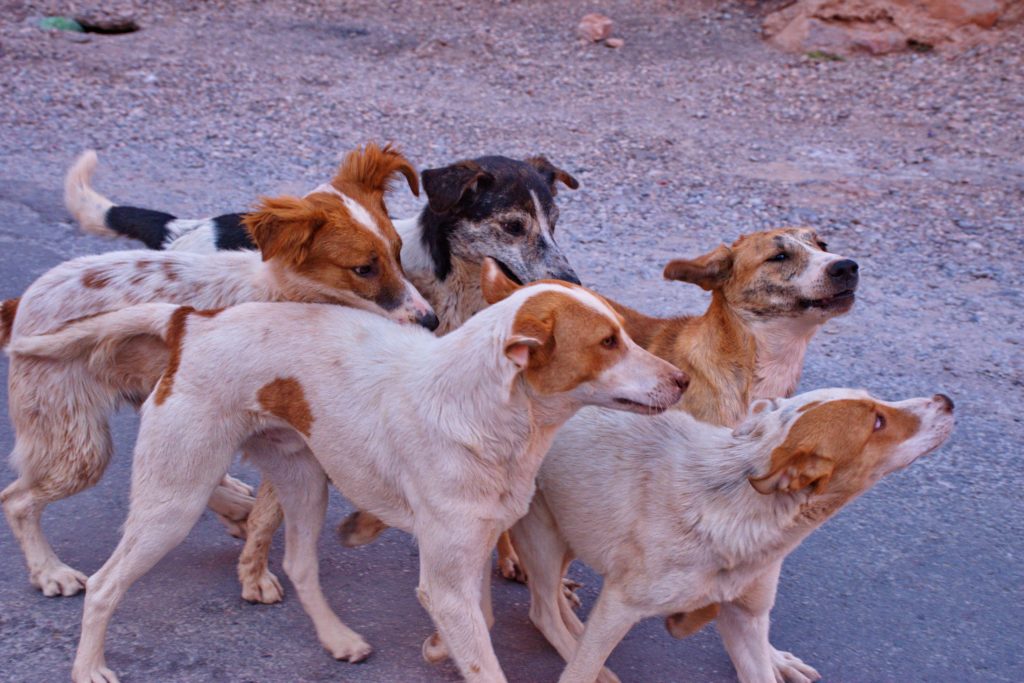
- calendar_month June 2, 2023
Talk to anyone who’s completed the LA Marathon and you’ll hear about a life-changing experience. It’s not quite hiking Mount Everest, but it’s a feat that commands a fair amount of respect. So, what happens when the participation medals and the t-shirts lose their meaning? What happens if they never had any meaning in the first place? For some elite runners, the Speed Project happens. This Los Angeles to Las Vegas no holds barred race is like a track-and-field take on an ayahuasca retreat. Esoteric. Mysterious. And, at certain points, pretty hardcore.
340 Miles of Intensity
Photo credit: Bernard Gagnon
While it’s only been around for eight years, the Speed Project has already built a reputation for being the most challenging relay race in the world. And that’s impressive considering it doesn’t try particularly hard to get on anyone’s radar.
You won’t find a website or even any way of applying for the race. As cliché as it sounds, the Speed Project finds you.
For such an intense race, the Speed Project is fairly relaxed when it comes to things like course, schedule, and rules. It has a clear starting point, Santa Monica Pier, and a clear finish line, the “Welcome to Fabulous Las Vegas” sign. What happens in the 340 miles between those points is largely up to the hundreds of participants.
The Typical Configuration
Photo credit: Envato
Most teams opt for the traditional (if any aspect of the Speed Project can be called “traditional”) configuration of six runners: two women and four men. How they divvy up their relay schedule is just one of the many factors they need to consider before the start sounds in the early hours at Santa Monica Pier.
Teams are typically shadowed by an RV and crew (also their responsibility). Costs can add up, but the notoriety of the race finds a who’s who of major sponsors footing bills left and right. Brands like Nike, Adidas, and New Balance send their own curated teams out every year to compete.
But keeping with the relaxed structure of the Speed Project, that annual date could drop at any given moment. Organizers are notorious for only giving a week’s notice for competitors to drop what they’re doing and get to LA. Still, come 4am on that date, Santa Monica Pier is crowded with racers, RVs, vans, and curious onlookers. And Las Vegas is waiting 340 sole-treaded miles away.
The “OG Route”
Photo credit: Davemeistermoab
Most racers opt to run the course that started it all, affectionately dubbed the “OG Route.” This route starts by weaving its way through Hollywood before breaking out of the city into the expansive horizon of the Antelope Valley.
Terrain can get as treacherous as it is barren. Runners will pass the post-apocalyptic landscape of an “airplane graveyard” at the periphery of the arid Mojave Desert.
The inhospitable climate continues through Barstow and Baker. The route clips the edge of Death Valley, noted for setting global heat records in the dead of the summer. After traversing a portion of the Old Spanish Trail, competitors will find Route 160 guiding them straight to their destination: the glittering promise of Las Vegas.
Photo credit: brsolutions
The OG Route is suggested, but not enforced. This leaves racers open to strategy, compelling runners to meticulously map out shortcuts leading up to the big day. There’s just one rule to which the runners need to adhere: no freeways.
It’s likely more of a legal precaution than anything. Runners are stopped by police officers frequently enough to warrant guidance from the Speed Project’s founders. Their advice? Keep responses short and sweet. A footrace to Las Vegas may be weird, but it’s not illegal.
Who Competes in the Speed Project?
But who are these runners selected to run the most challenging race in the world? As the Speed Project’s name would imply, they’re typically noted for being remarkably fast. But the Speed Project founders, Nils Arend and Blue Benadum, are looking for athletes who stand for something. And this underlying mission is often the most important qualifier in a runner’s application… an application that can only be accessed by express invitation.
Photo credit: The Speed Project Instagram
As we mentioned, it’s a race with no medals or t-shirts. It’s also devoid of cash prizes and the acclaim of spectators. So, what compels some of the world’s most elite runners to queue up at the starting line?
For these competitors, the unique challenge is far more enticing than any reward or wide-spread glory. Where else will they find a course that truly tests their mettle? The allure of a route riddled with hazards, pushing them to the limits of their endurance, is too intriguing to pass up.
Some runners find a heightened sense of camaraderie while crossing the brutal Mojave with their teammates. Still others feel a profound, meditative sense of isolation.
Running the Speed Project Solo
Perhaps no one would understand that strange peace like British racer James Poole. While the Speed Project participants typically compete in teams, Poole has completed the entire course solo… not once, but twice. On his first solo run, he brought along a documentary crew to record the experience. On his second solo run, he forwent a crew altogether.
Competing in the solo category presents an altogether different side of the Speed Project. For one, it takes over double the time that it would a relay team. American runner Lucy Scholz holds the solo record, completing 2023’s race in 84 hours and 45 minutes. By comparison, the relay team record, also set in 2023 by American group Daddy Braddy’s Stallions, stands at 29 hours and 21 minutes.
But the solo category also strips runners of the support of a relay team, unlocking new levels of endurance. When Poole decided to run the course without any sort of support team, Arend himself called him crazy. And who could blame him?
Photo credit: Envato
An uncharacteristically chilly March pushed Poole to race through rain and snow. He regularly breached through eight to 10 hour shifts with no opportunities to replenish food or water. And yet, a staggering 119 hours later, he crossed the Las Vegas finish line as alone as when he’d started.
The Dangers of the Speed Project Track
Whether competing with a team or venturing a solo run, participants of the Speed Project can expect a grueling trek. Heat exhaustion and barren landscapes are par for the course, but there are also more colorful hazards.
For instance: the seemingly ever-present danger of stray dogs. Aggressive strays are a common enough occurrence that teams have been known to pack pepper spray for the most persistent of pooches.
Photo credit: Envato
But that pepper spray could also come in handy at the very beginning of the race. Runners make their way from Santa Monica Pier at 4am through stretches of Hollywood where anything can happen. While most runners are flanked by their team’s RV, some get separated. And Hollywood’s nocturnal community holds little respect for a race; even if it is the world’s most excruciating.
The Men Behind the Mysterious Speed Project
Occasionally during the race, runners are likely to catch a glimpse of a 1990 Lincoln stretch limo keeping pace with participants. It’s the chariot of organizers Arend and Benadum who are known to livestream the highlights of the event and interviews with runners recovering in their downtime. Dressed in their uniform of tuxedos with running shorts, they’re instantly recognizable.
Arend, an Angeleno by way of Hamburg, stands out with his hair shorn into a Mohican. A veteran of Germany’s nightclub scene, he was known for hosting raves in Hamburg’s red light district.
Photo credit: The Speed Project Instagram
In 2013, he established the “OG” method of the Speed Project: four men and two women running the “OG Course” in relay style. He partnered with American marathon legend Benadum to bring the world’s most mysterious, challenging race into annual tradition. And while Arend was interested in testing his mettle beyond what a typical marathon offered, Benadum underscored that the Speed Project needed to be about, fittingly enough, speed.
But speed is simply the practice that allows the greater ethos of the Speed Project to shine through. It’s a great escape: a 340-mile stretch outside the status quo; a road without masters beyond those set in place by the physical world. Every footfall brings the runner closer to the finish line, yet all that matters is the mercy of that present moment. It’s a tense juxtaposition. Yet, in that tension, the Speed Project reveals the true splendor of the human spirit.








